Hoping to grow a successful asparagus crop? You’re in the right place. Learn what you can plant next to asparagus and what you should not plant near asparagus crowns. Get ideas about which flowers (annuals and perennials) grow well with asparagus, which fruit grows well with asparagus, which herbs grow well with asparagus, and which vegetables grow well with asparagus. It’s all here, along with tips about the best place to plant asparagus, the best fertilizer for asparagus, and the water needs of asparagus.
There is a handy quick reference chart included. We have grown asparagus in our USDA plant hardiness zone 8b vegetable garden for over two decades. I’ve even been known to use fronds from asparagus plants in decorative flower arrangements. If you are looking for a reliable, returning springtime addition to your collection of culinary garden plants, read on to learn how simple it is to grow fabulous asparagus year after year with this complete growing guide.
One caveat about planting and growing asparagus: It’s important to note that asparagus requires patience, as it often takes a year or two before you can begin harvesting spears. However, once established, a well-maintained asparagus bed can provide a bountiful harvest for many years. I like to think of them as good friends that are welcomed back each spring.
Table of Contents
Why I Love to Grow Asparagus
In my zone 8b garden on our small farm, asparagus comes back each year. Similar to rhubarb, I know I can count on it to return reliably, and I do very little to maintain it. Here is on or our asparagus patches in the winter, with old garden gloves on stakes to mark out the spot.
Asparagus makes a great simple side dish, just steamed in the microwave and sprinkled with a little lemon pepper. Asparagus is also easy to roast, and I’ve included a simple recipe further on down. Ready to grow a successful asparagus crop? Let’s get those crowns planted!
What is Companion Planting?
What are the advantages of companion planting and why is it effective? Companion planting is a gardening technique that involves strategically planting different crops near each other to maximize the benefits of their interactions. This practice takes advantage of the relationships between various plants, promoting mutual growth, pest control, and overall health in the garden. With that in mind, here are some of the best companion plants for asparagus that will potentially benefit both plants involved.
Companion Flowers for Asparagus
Annuals
These annual flowers not only add beauty to the asparagus bed but also play a role in pest management and overall garden health.
Marigolds: Marigolds are known for their ability to deter nematodes in the soil. Planting marigolds with asparagus can help reduce the risk of nematode infestations, benefiting the overall health of the asparagus bed.
Nasturtiums: Nasturtiums act as a trap crop, attracting aphids and other pests away from asparagus. Their pungent scent can also deter certain insects harmful to asparagus.
Alyssum: Alyssum serves as a ground cover that suppresses weeds and attracts beneficial insects. The presence of alyssum can create a more balanced ecosystem in the asparagus bed.
Calendula: Calendula flowers can attract pollinators and beneficial insects to the asparagus patch. Their bright blooms contribute to a visually appealing garden while supporting biodiversity.
Perennials
Incorporating the following perennial flowers into the asparagus bed not only adds visual interest but also supports a healthier and more resilient garden ecosystem.
Chamomile: Chamomile can help improve the flavor of nearby plants, including asparagus. Its antibacterial properties may contribute to the overall health of the asparagus bed.
Yarrow: Yarrow attracts beneficial insects and can enhance soil structure. This perennial flower creates a more favorable environment for asparagus growth.
Coreopsis: Coreopsis attracts pollinators and provides a burst of color to the garden. The increased pollination can benefit asparagus production.
Companion Fruit for Asparagus
We have one of our asparagus patches in amongst the strawberry plants, and both do well. Here are some fruit plants, including strawberries, that offer complementary benefits. Planting these fruits alongside asparagus can create a harmonious and productive garden environment:
Strawberries: Planting strawberries with asparagus can be mutually beneficial. Strawberries serve as a ground cover, suppressing weeds around asparagus. Additionally, the vertical growth of asparagus provides some shade for strawberries.
Rhubarb: Rhubarb and asparagus have similar cultural requirements and can coexist in the same garden space. Both plants are perennials and share preferences for well-drained soil and sunlight.
Gooseberries or Currants: These fruit bushes can be compatible with asparagus. They don’t compete heavily for the same resources, and their presence can add diversity to the garden.
Companion Herbs for Asparagus
Incorporating the following herbs into the asparagus bed not only adds culinary variety but also supports the health and productivity of the asparagus plants through pest management and other beneficial interactions:
Parsley: Parsley is believed to improve the growth and flavor of asparagus when planted nearby. It also attracts beneficial insects, contributing to a healthier garden ecosystem.
Basil: Basil can help repel certain pests that may affect asparagus. Its aromatic properties may act as a natural deterrent, promoting a more pest-resistant asparagus bed.
Comfrey: Comfrey is a dynamic accumulator, drawing up nutrients from deep in the soil and making them available to nearby plants like asparagus. Its leaves can be used for mulch, enriching the soil.
Dill: Dill attracts beneficial insects like parasitic wasps, which can prey on pests harmful to asparagus. The presence of dill can support biological pest control.
Lavender: Lavender’s aromatic qualities can help repel pests that might harm asparagus. Planting lavender nearby can contribute to pest control and create a more pleasant garden environment.
Thyme: Thyme has antimicrobial properties that may contribute to the overall health of the asparagus bed. Its low-growing habit can also act as a ground cover, suppressing weeds.
Companion Vegetables for Asparagus
Planting the following companion vegetables alongside asparagus can create a more diverse and harmonious garden, promoting healthier growth and pest management:
Tomatoes: Asparagus can benefit from the presence of tomatoes, as tomatoes help repel asparagus beetles. The combination supports a more pest-resistant asparagus bed.
Lettuce: Lettuce can act as a living mulch around asparagus, suppressing weeds and helping retain soil moisture. The combination of asparagus and lettuce promotes efficient use of garden space.
Carrots: Carrots and asparagus are compatible as they have different root structures and nutrient needs. This diversity can help prevent nutrient depletion and create a healthier growing environment.
Beans: Asparagus and beans are good companions as they have complementary growth habits. Beans can provide a natural trellis for asparagus ferns, and their nitrogen-fixing abilities benefit neighboring plants.
What Should You not Plant Near Asparagus?
Asparagus has specific needs and interactions with other plants that should be considered for successful growth. Here are some plants that are generally not recommended to be planted near asparagus:
Alliums (Onions, Garlic, Chives): Asparagus and alliums, such as onions, garlic, and chives, are not considered ideal companions. Alliums can potentially stunt the growth of asparagus.
Potatoes: Asparagus and potatoes are both susceptible to the asparagus beetle. Planting them together may attract and encourage the growth of these pests.
Asparagus Companion Plants Quick Reference Chart
| Best Asparagus Companion Plants | |
| Asparagus Companion Plants: Flowers | Asparagus Companion Plants: Fruit |
| Annuals | Gooseberries or Currants |
| Allysum | Rhubarb |
| Calendula | Strawberries |
| Marigolds | |
| Nasturtiums | |
| Perennials | Asparagus Companion Plants: Vegetables |
| Chamomile | Beans |
| Coreopsis | Carrots |
| Yarrow | Lettuce |
| Tomatoes | |
| Asparagus Companion Plants: Herbs | |
| Basil | Worst Asparagus Companion Plants |
| Comfrey | Chives |
| Dill | Garlic |
| Lavender | Onions |
| Parsley | Potatoes |
| Thyme | |
Common Questions About Planting Asparagus
Where is the best place to plant asparagus?
What does asparagus love? Here are key considerations for selecting the optimal planting site for asparagus:
Sunlight: Asparagus plants thrive in full sunlight. Choose a location that receives at least 6 to 8 hours of direct sunlight each day. Adequate sunlight is crucial for spear production and overall plant health.
Well-Drained Soil: Asparagus prefers well-drained soil that is rich in organic matter. Avoid waterlogged or heavy clay soils, as they can lead to root rot and other issues. Raised beds can be beneficial in areas with poor drainage.
Soil pH: Asparagus grows well in slightly acidic to neutral soil with a pH range of 6.0 to 7.0. Test the soil and amend it if necessary to achieve the optimal pH level.
Spacing: Plant asparagus in rows with adequate spacing to allow for proper development. Space the plants about 12 to 18 inches apart within rows, and leave 3 to 4 feet between rows.
Protection from Wind: While asparagus can tolerate some wind, it’s beneficial to choose a location that offers some protection from strong winds. Windbreaks or planting asparagus near other taller crops can provide protection.
Permanent Location: Asparagus is a perennial crop that can produce for many years. Choose a permanent location for your asparagus bed, as the plants become more productive with age. Avoid areas where the asparagus bed might be disturbed or displaced.
No Competition from Tree Roots: Avoid planting asparagus near trees with extensive root systems, as tree roots can compete for nutrients and water.
When is the best time to plant asparagus?
The best time to plant asparagus is typically in early spring. Asparagus is a perennial vegetable that establishes deep roots, and early spring planting allows it to take advantage of the cool, moist conditions for root development before the growing season. In many regions, planting asparagus crowns (the root system) is recommended as soon as the soil can be worked in the spring. This is usually around March or April, depending on your local climate and frost dates.
How far apart do you space asparagus crowns?
When planting asparagus crowns, it’s important to space them appropriately to allow for proper growth and development. Here are general guidelines for spacing asparagus crowns:
In-Row Spacing: Plant the crowns within the row with a spacing of approximately 18 to 24 inches apart. This distance provides enough room for the mature asparagus plants to spread out.
Between Rows: Space the rows of asparagus about 4 to 5 feet apart. This wider spacing between rows allows for easier access during maintenance tasks and harvesting.
How deep do you plant asparagus crowns?
When planting asparagus crowns, the depth is crucial for proper establishment and growth. Follow these guidelines:
Planting Depth: Dig a trench that is approximately 6 to 8 inches deep. Place the asparagus crowns at the bottom of the trench.
Spacing: Space the crowns about 18 to 24 inches apart within the trench.
Covering: Cover the crowns with soil, initially placing about 2 inches of soil over them. Gradually fill in the trench as the asparagus grows, ensuring that the crowns are eventually covered with soil.
Mound: Create a small mound over the planted crowns to help with water drainage.
How many asparagus plants for a family of 4?
A common recommendation is to plant around 10 to 15 asparagus plants per person in the family. Therefore, for a family of four, you might consider planting 40 to 60 asparagus plants. That is a lot of asparagus! However, space is definitely a consideration. Since asparagus plants should be spaced about 12-18 inches apart in rows, and rows should be spaced about 3-4 feet apart, you might only have room for a fraction of that number. My recommendation is to start with 10-15 crowns and see how much asparagus you actually use.
Should I buy male or female asparagus plants?
How do you tell which is which when you buy the crown? For asparagus cultivation, it is generally recommended to buy male asparagus plants. Male plants are preferred for several reasons:
Higher Yield: Male asparagus plants tend to produce more and larger spears compared to female plants. Since male plants don’t invest energy in producing seeds, more energy is directed towards spear production.
No Seed Production: Male plants do not produce berries or seeds. This can be advantageous because the energy that would otherwise go into seed production is channeled into spear development, leading to a more robust harvest.
Longer Harvest Season: Male plants often extend the harvest season as they continue to produce spears over a more extended period.
When purchasing asparagus crowns, it can be challenging to visually identify the sex of the plant. Instead, look for varieties that are specifically labeled as all-male hybrids or predominantly male. Common male asparagus varieties include ‘Martha Washington,’ ‘Jersey Giant,’ ‘Jersey Knight,’ and ‘Jersey Supreme.’
If you are unsure about the sex of the asparagus crowns you are purchasing, consider asking the seller or nursery for information on the variety and whether it is a predominantly male hybrid. For example, I had to do a bit of research to learn that the Martha Washington asparagus crown is most likely male, despite its female name.
Common Questions About Growing Asparagus
How much water does asparagus need?
Asparagus generally requires consistent moisture, especially during the growing season. Here are some guidelines for watering asparagus:
Establishment Phase: Keep the soil consistently moist during the initial stages of growth, especially when asparagus is developing roots and shoots. Watering every 3-5 days, depending on weather conditions, is a good starting point.
Bulb Formation Phase: As asparagus begins to produce spears and bulbs, reduce the frequency of watering but ensure the soil doesn’t dry out completely. Allow the top few inches of soil to dry between watering to prevent overwatering and promote healthy bulb development.
Late Spring to Harvest: In the weeks leading up to harvest (late spring to early summer), reduce watering to allow the soil to dry out slightly. This helps with the curing process and enhances the storage quality of the harvested asparagus.
What are the enemies of asparagus?
Asparagus can face various pests and diseases that can affect its growth and yield. Here are some common enemies of asparagus:
Asparagus Beetle (Crioceris asparagi): Both the common asparagus beetle and the spotted asparagus beetle can damage asparagus plants by feeding on the emerging shoots and ferns. Their larvae can also harm the spears by tunneling into them.
Fusarium Crown and Root Rot: This fungal disease can affect the roots and crown of asparagus, causing yellowing, wilting, and ultimately, death of the plant.
Rust (Puccinia asparagi): Asparagus rust is a fungal disease that appears as orange to brown pustules on the ferns. It can weaken the plants and reduce yields.
Nematodes: Certain nematodes can damage the roots of asparagus, affecting the overall health and productivity of the plant.
Aphids: Aphids can infest asparagus plants, feeding on the sap and potentially spreading diseases. They can distort the growth of shoots and transmit viruses.
Proper garden management practices, such as regular inspection, proper spacing, and maintaining healthy soil, can help prevent and manage these enemies.
What is the best fertilizer for asparagus?
Asparagus benefits from a balanced fertilizer application, especially in the early spring before the growing season begins. A general-purpose, balanced fertilizer with equal or similar amounts of nitrogen (N), phosphorus (P), and potassium (K) is suitable for asparagus. Look for a fertilizer with an N-P-K ratio of around 10-10-10 or 5-10-10 and follow the directions on the package for proper application. If you prefer organic fertilizers, well-aged compost or composted manure can be used to enrich the soil around asparagus. Apply these organic amendments in early spring.
Can you put mulch over asparagus?
Yes, you can put mulch over asparagus, and doing so can offer several benefits for the plants. Mulching around asparagus helps in the following ways:
Weed Suppression: Mulch creates a protective layer over the soil, suppressing the growth of weeds. This is particularly important for asparagus, as it prevents competition for nutrients and reduces the need for frequent weeding.
Moisture Retention: Mulch helps retain soil moisture by reducing evaporation. Asparagus plants benefit from consistent moisture, especially during dry periods, and mulching can contribute to a more stable soil moisture level.
Temperature Regulation: Mulch acts as an insulator, regulating soil temperature. This is beneficial for asparagus, as it prefers well-drained soil with a consistent temperature. Mulch helps prevent extreme temperature fluctuations.
Soil Erosion Control: The protective layer of mulch helps prevent soil erosion, particularly during heavy rainfall or irrigation. This is important for maintaining the integrity of the asparagus bed.
When applying mulch around asparagus, it’s essential to follow these guidelines:
Apply a layer of organic mulch, such as straw, wood chips, or shredded leaves, to a depth of 2 to 4 inches.
Leave a space around the emerging spears to allow them to grow freely without obstruction.
Avoid piling mulch directly against the asparagus crowns to prevent potential crown rot.
Does asparagus multiply on its own?
Yes, asparagus plants have the ability to multiply on their own through the growth of underground structures called rhizomes. Over time, the crown of the plant develops these rhizomes, which are horizontal underground stems. The rhizomes give rise to daughter plants, essentially creating new asparagus plants connected to the parent plant. Each daughter plant has its own crown and can produce spears.This natural process of rhizome growth and daughter plant formation leads to the expansion of the asparagus bed. As the rhizomes spread, more asparagus plants emerge, resulting in a cluster or bed of interconnected plants.
Common Questions About Harvesting Asparagus
How many spears does one asparagus plant produce?
The number of spears produced by one asparagus plant can vary based on factors such as the age of the plant, growing conditions, and the specific variety of asparagus. In the early years after planting, it’s common for asparagus plants to produce fewer spears, but the yield typically increases as the plants mature.
On average, a well-established and healthy asparagus plant can produce around 8 to 12 spears per growing season. However, this number can vary, and some plants may produce more or fewer spears.
What happens if you don’t cut asparagus?
If you don’t cut asparagus spears when they are ready for harvest, several things can happen:
Mature Fern Growth: If asparagus spears are left unharvested, they will continue to grow and mature into fern-like structures. These ferns are the mature, reproductive stage of the asparagus plant. I will admit, I miss harvesting some asparagus spears, and when this happens, I often use the feathery fronds as fillers in flower arrangements, as already noted.
Energy Diversion: Allowing asparagus spears to mature into ferns means the plant’s energy is diverted from spear production to fern development. The plant will focus on photosynthesis and the production of seeds rather than producing edible spears.
Reduced Spear Quality:** As asparagus spears mature, they become woody and fibrous, making them less desirable for consumption. Harvesting spears at the proper stage ensures tender and flavorful asparagus.
Weakened Crowns: Continuous harvesting of asparagus spears during the growing season helps strengthen the plant’s crowns. If you consistently allow the spears to grow into ferns without harvesting, it may weaken the overall vigor of the plant.
Seed Production: Allowing asparagus ferns to produce seeds can result in self-seeding, leading to the growth of new asparagus plants. While this may not be inherently negative, it can affect the management of your asparagus bed.
To maintain a healthy and productive asparagus bed, it is advisable to harvest spears when they reach the appropriate size (typically 6 to 8 inches). Regular harvesting promotes a stronger root system, encourages spear production, and ensures a more desirable harvest. If you want to allow some spears to mature for seed production or to strengthen the crowns in the later part of the growing season, you can do so while still maintaining a balance for optimal plant health.
Should asparagus be cut or snapped?
Asparagus can be cut or snapped for harvest, and the choice often comes down to personal preference or cultural tradition. Both methods are effective in harvesting asparagus, but some people have strong opinions on which is the preferred technique. Here’s a brief overview of each method:
Cutting:
Use a knife or scissors to cut the asparagus spear just above the soil surface. Make a clean, quick cut to avoid damaging the emerging spears.
Cutting is a precise method that allows for accurate removal of spears without causing unnecessary stress to the plant. Some argue that cutting is more hygienic and can result in a neater appearance.
Snapping:
Bend the asparagus spear near the bottom until it naturally snaps. The spear breaks at the point where it becomes tender.
Snapping is a more traditional and hands-on method that some people prefer for its simplicity. While snapping is often considered quicker, there’s a chance of uneven breakage, potentially leaving fibrous ends.
Need More Planting Ideas?
Check out the tips for the best companion plants for eggplant to learn what to grow with those beauties. If you like the idea of companion planting, you might be interested in reading about the best companion plants for pumpkins, garlic, blueberries, or hydrangeas, or rosemary. Get tips for growing stunning dahlias. Are you a beginning gardener? Try planting some foolproof, easy-care perennials, or learning about the best companion plants for columbine. There are so many exciting plants to grow!
What are the Best Ways to Use Asparagus?
Asparagus is great to use in recipes, and the fronds of unpicked asparagus can make an attractive filler in cut flower arrangements. One of the simplest ways to cook asparagus is to roast it, so here’s a simple recipe.
Simple Recipe for Roasted Asparagus
Ingredients:
1 pound of fresh asparagus spears
1-2 tablespoons of olive oil
Salt and pepper to taste
Optional: Grated Parmesan cheese, lemon zest, or balsamic glaze for extra flavor
Instructions:
Preheat your oven to 400°F (200°C).
Wash the asparagus spears and trim off the tough ends. You can snap them at the natural breaking point or use a knife to cut about 1-2 inches from the bottom.
Place the trimmed asparagus on a baking sheet. Drizzle with olive oil, making sure to coat the spears evenly.
Sprinkle salt and pepper over the asparagus to taste. Toss the spears to ensure they are well-coated with oil and seasoning.
Roast in the preheated oven for about 12-15 minutes, or until the asparagus is tender but still crisp. Cooking time may vary based on the thickness of the spears.
If desired, sprinkle grated Parmesan cheese over the roasted asparagus during the last few minutes of cooking. For added freshness, consider finishing with a sprinkle of lemon zest or a drizzle of balsamic glaze before serving. Transfer the roasted asparagus to a serving dish and enjoy as a delicious side dish.
Need More Planting Ideas?
Check out the tips for the best companion plants for eggplant to learn what to grow with those beauties. If you like the idea of companion planting, you might be interested in reading about the best companion plants for pumpkins, lavender, sunflowers, rhubarb, blueberries, or rosemary. Get tips for growing stunning dahlias. Are you a beginning gardener? Try planting some foolproof, easy-care perennials, or learning about the best companion plants for columbine. There are so many exciting plants to grow!
Keep Track of Your Garden with a Journal Logbook
Now that you have learned about some compatible companion plants, keep track of your planting ideas, goals, and plans with a free garden journal logbook. Choose the pages you want to print and customize them as you wish to record monthly, weekly, and daily garden tasks, lists, weather, and planting arrangements. There are also grid pages for easily designing the layout of your vegetable garden, flower garden, or landscape. Print it out and put it into a notebook you can take with you to the garden (that’s what I do). It’s nice to have all of your garden information in one place.
Free Online Garden Planner Layout Template
Now that you know which are the best companion plants for asparagus, you might need a way to plan your garden layout. Whether you are planting vegetables, flowers, or herbs near your lavender plant, this online garden planner can help you visualize your design and bring it to life. With garden tasks that need your attention, this is one way to save time.
It’s fully customizable when you make your own copy and includes two editable chart pages for noting planting specifications.
Get my free online garden layout planner template!
Organize Your Garden Tasks with a Free Garden Planner Notebook
As a result of needing to keep track of garden tasks throughout the year, I decided to begin a garden planner notebook. It has a page for each month, along with notes pages. If a garden planner notebook seems like a good idea to you, good news! You can get it here!
Get the garden notebook!
Have a wonderful week, and may all of your sunflower-growing endeavors meet with success!
Lisa Mitchell is a wife, mom, and school librarian who likes to grow fruit, vegetables, and flowers on her family’s small Pacific Northwest farm. To learn more about what this website has to offer gardeners, click on over to the Garden page.
Like what you read here? Please give it a share!
Want more great garden, food, or travel ideas? Follow FluxingWell on Pinterest, Facebook, Instagram, and X for the latest posts, tips, and inspiration.

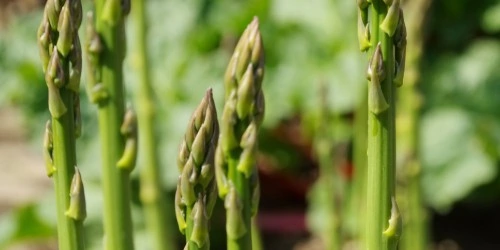
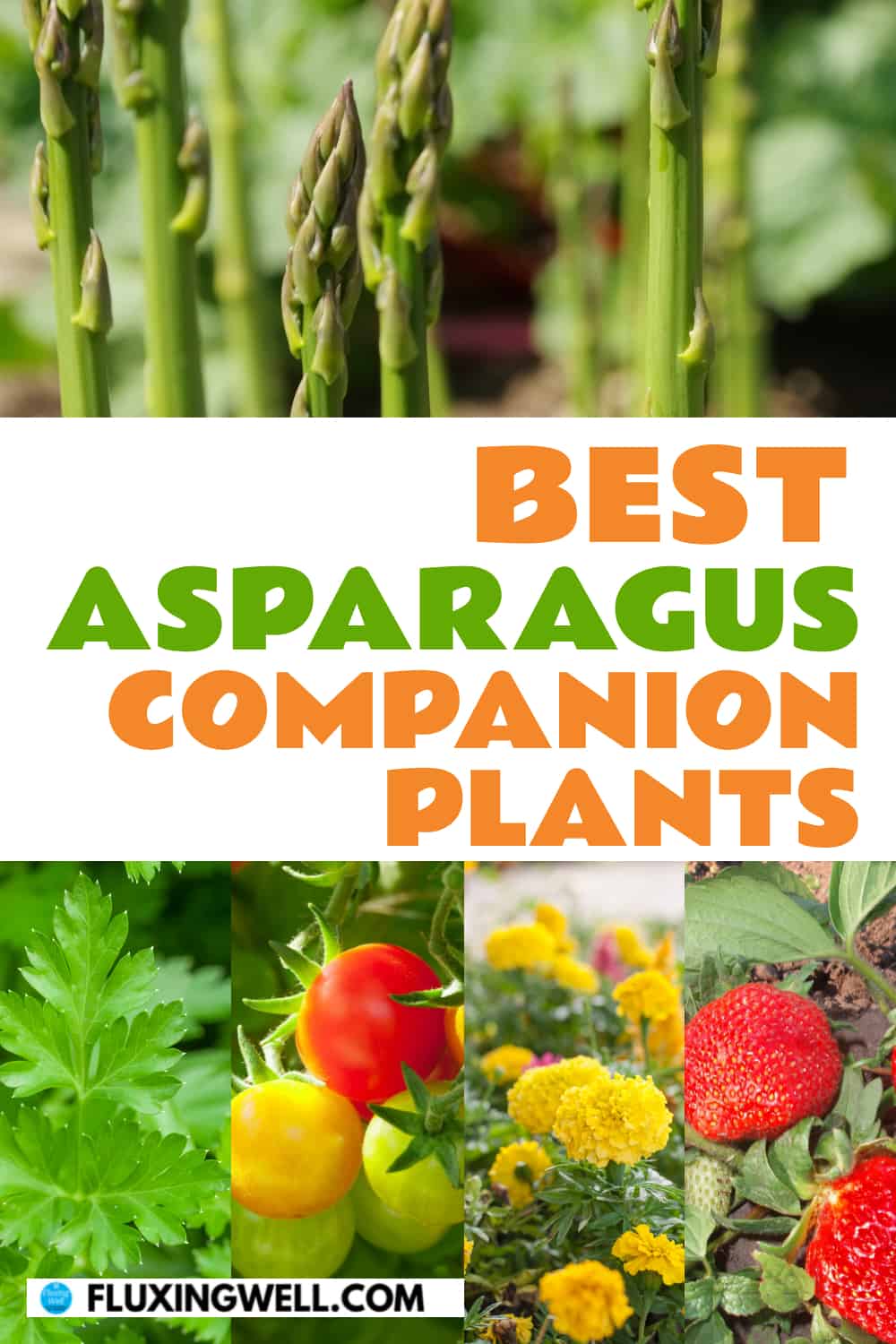
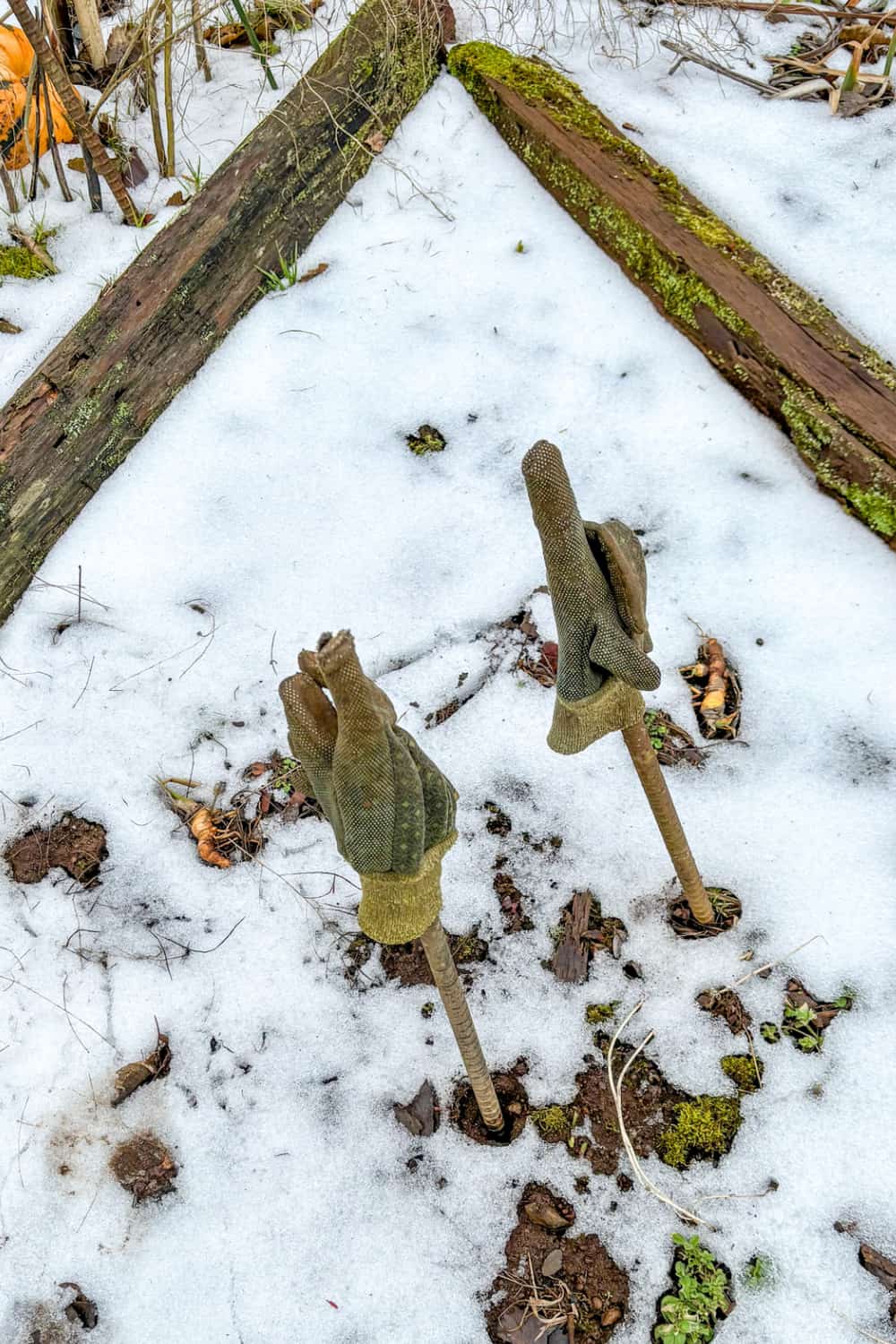
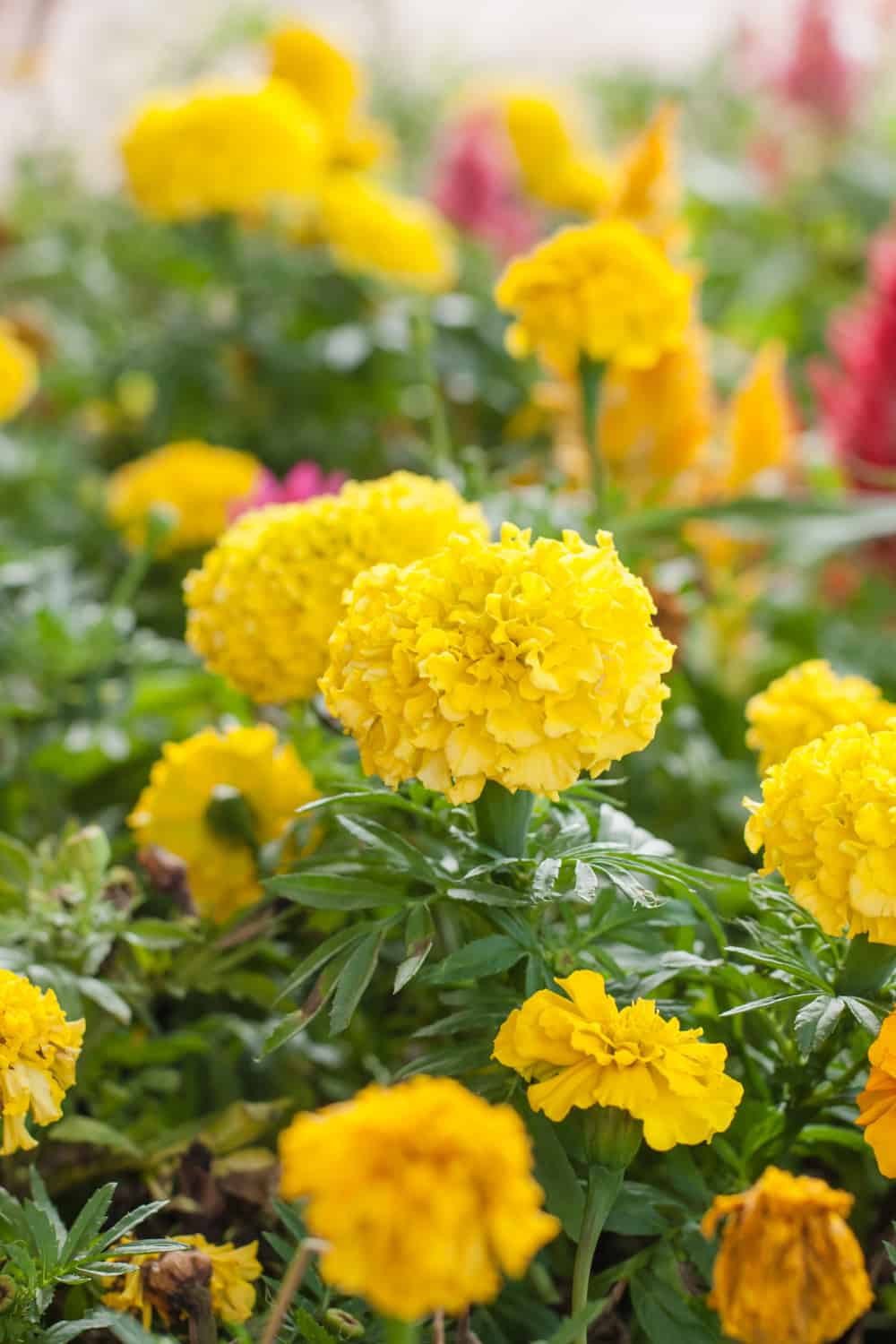
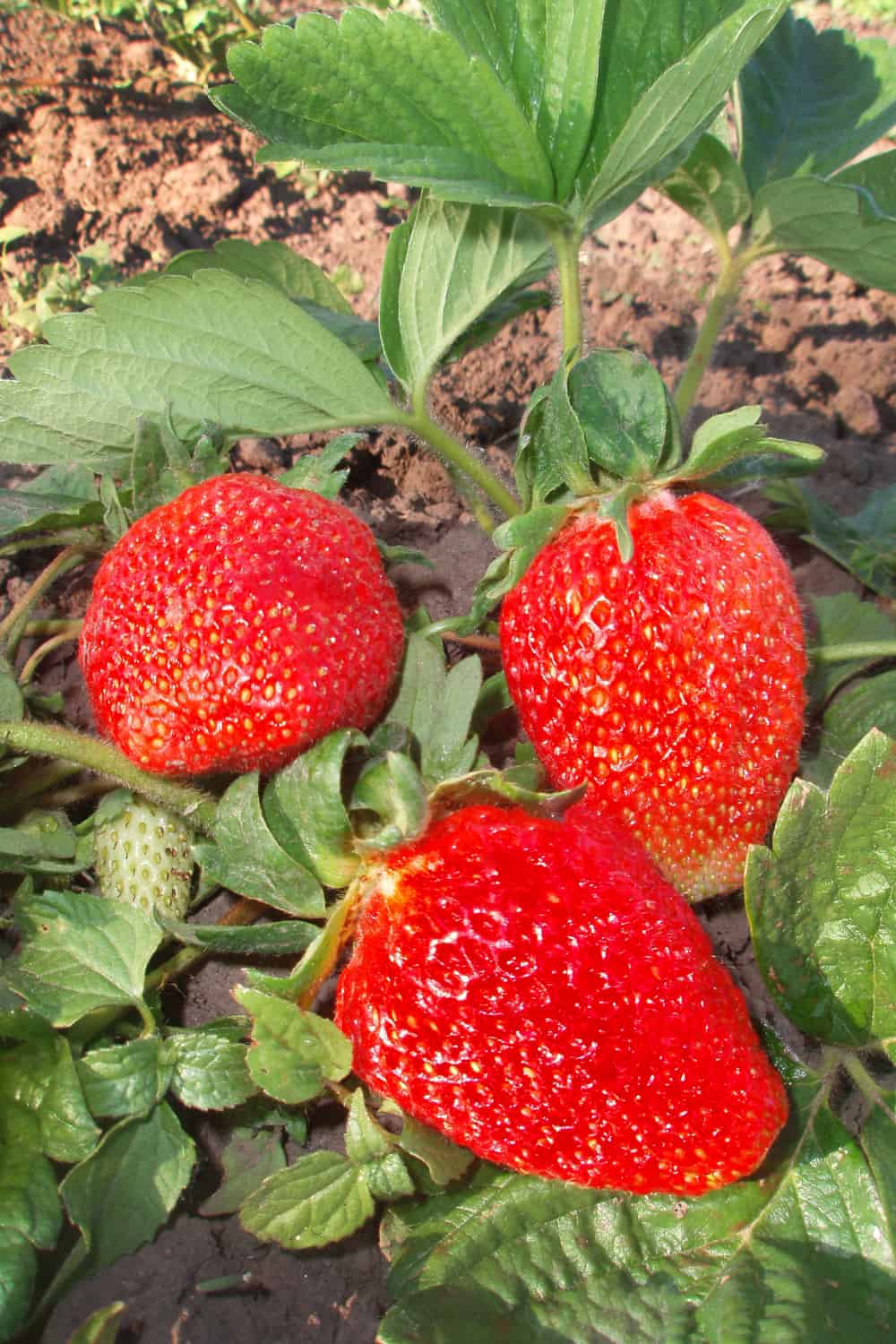
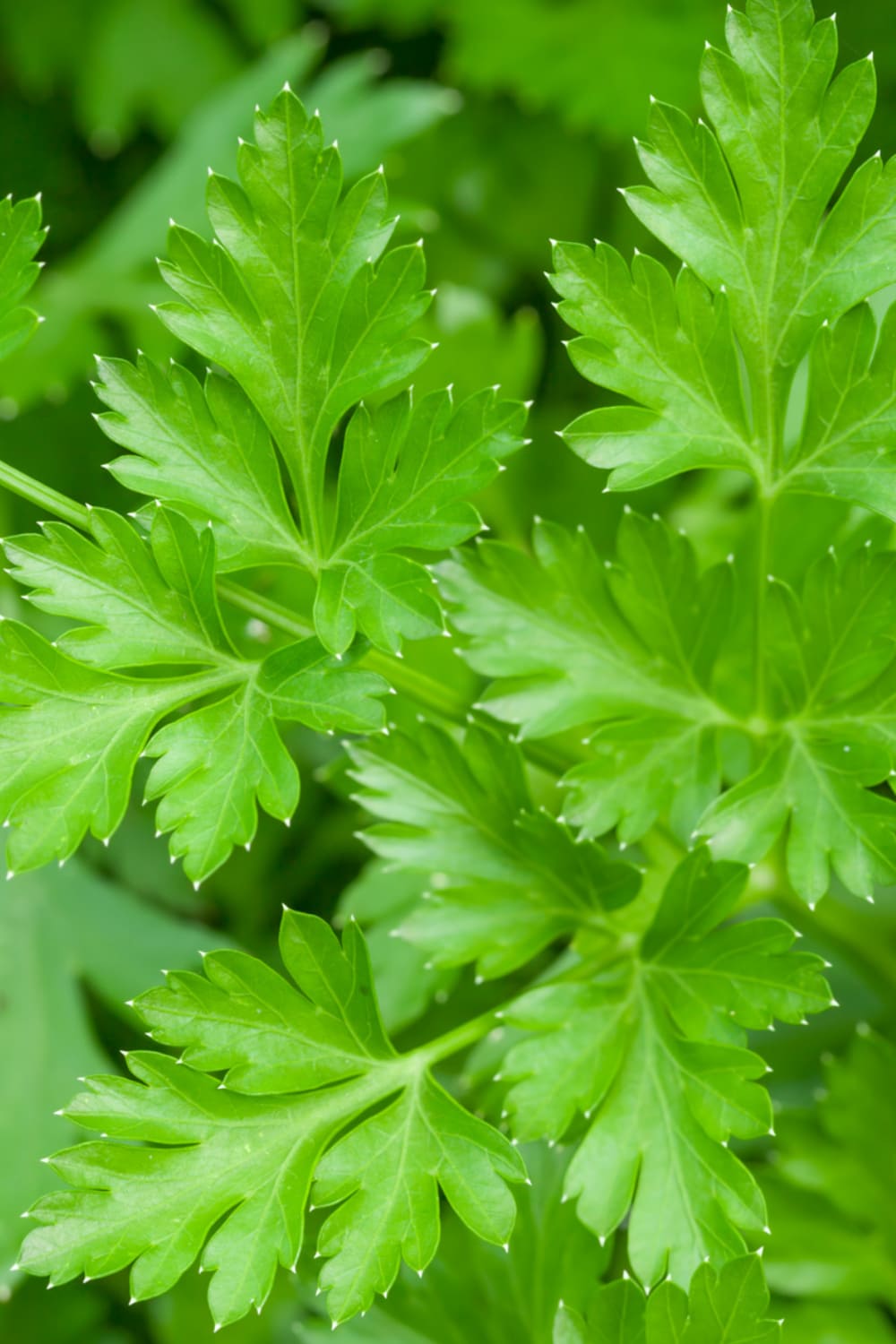
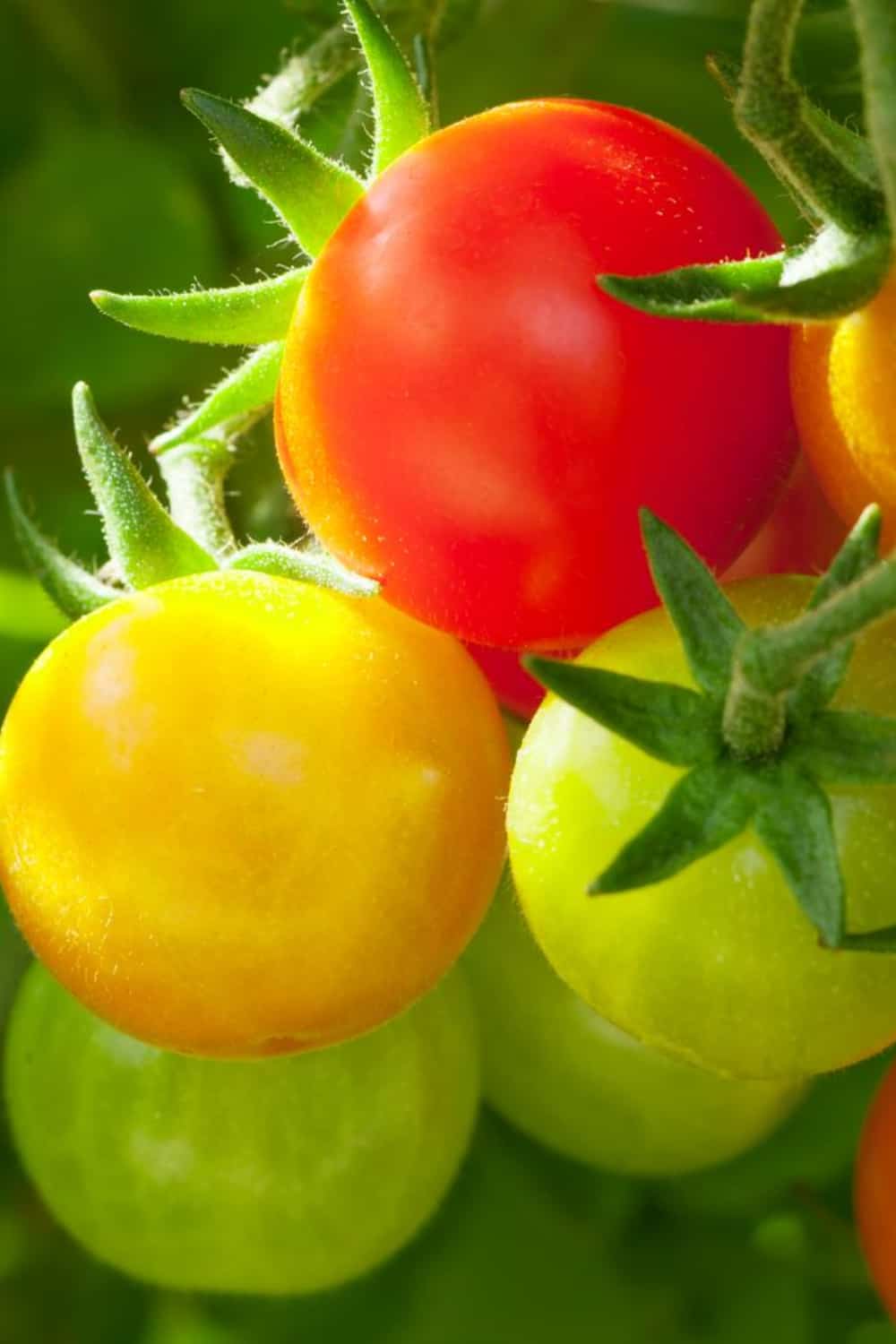





This is a great list of the 20 asparagus companion plants and the perfect complete growing guide for us. Asparagus is my husband’s favorite side dish and I make it a bunch. I’m excited to try your recipe as I’ve never tried a cheese or balsamic glaze before!
Well, I am super glad your husband is a big fan of asparagus. Have fun planting it, growing it, and cooking it!
Thanks for sharing this helpful article about asparagus companion plants, Lisa! I love asparagus but I am not so much of a gardener. I am very happy that you shared also you simple recipe for roasted asparagus, I need to try it!
Have fun trying out the roasted asparagus recipe!
I’m so excited to plant asparagus. Thank you for all of the tips. I never knew there were make and female asparagus plants. I appreciate the advice about asparagus companion plants as I am making my garden plan.
I wish you success as you plant good companions for your asparagus crop.